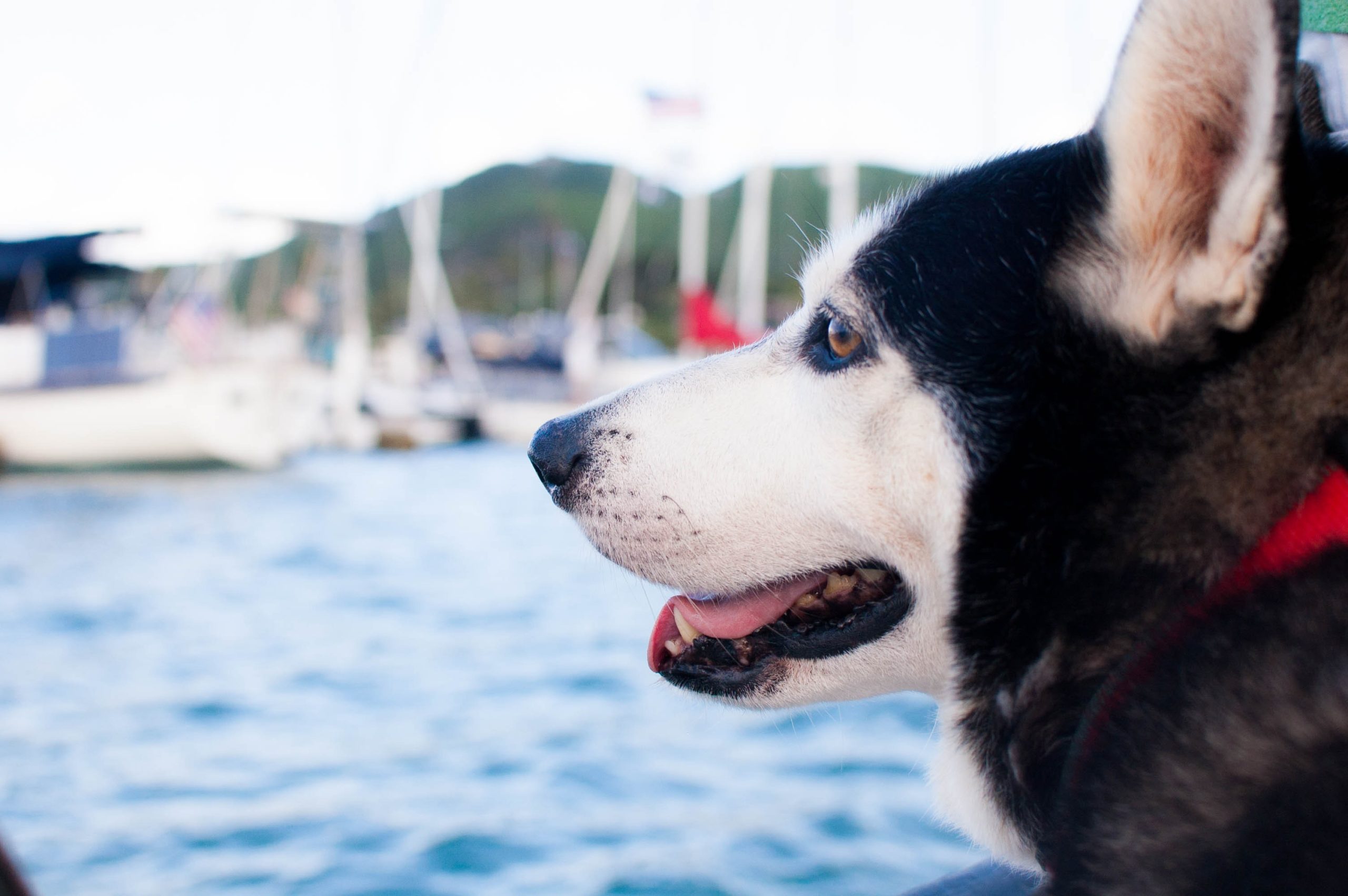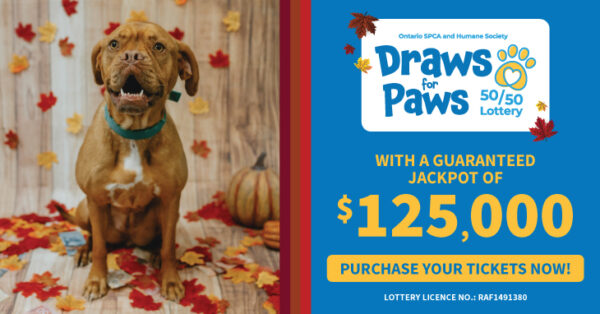Pet Travel Safety Tips
by Ontario SPCA and Humane Society | General Pet Care | January 2, 2023

Today is National Pet Travel Safety Day! If you have plans to travel with your furry friends, we want to make the process as smooth as possible. Check out these tips to make travelling with your animal companions easy and fun.
Travelling safely with your furry friend
Whether you plan to travel with your companion animal by plane, train, automobile or boat, taking appropriate precautions and making necessary preparations are essential. Planning ensures a safe and enjoyable journey for you and your furry friend – whether the trip is down the street, cross country or across the globe.
On the road
Road trips are generally the easiest and most relaxing way to travel with your pet. Train your companion animal to travel in a car by taking them on lots of short car trips to places they love. For your animal’s safety and your own, confine them to the back seat, either in a carrier or seatbelt for your animal (a special harness that attaches to the car’s seatbelt).
To keep your pet comfortable throughout the trip:
- Keep the car at a comfortable temperature using air conditioning or heat when necessary. Never leave your furry friend alone inside the vehicle, even with windows partially open, as it causes a danger for them.
- Feed your furry friend a light meal at least four hours before the trip (to help prevent car sickness).
- Prevent your companion animal from sticking their head out the window (sudden stops and debris can cause injury).
- Schedule rest stops every two to four hours for exercise, bathroom and water breaks (bring a litter box for cats).
- Attach your companion animal’s leash before opening the car door (to prevent accidental escapes).
- If your animal is not used to travelling, use a harness (it’s more difficult for your animal to wriggle out of).
- If crossing borders, bring a copy of any required documents (e.g., proof of vaccinations).
- Keep the car sound system volume moderate as animals have sensitive hearing.
Taking flight
While some furry friends take to the sky with the air of seasoned veterans, many find flying a stressful experience. The largest impact on your furry friend’s comfort and safety will be where they are contained while travelling in the plane. Small animals can often be taken into the passenger cabin with your carry-on luggage and kept under the seat in front of you throughout the flight. Larger animals must travel in the cargo hold.
Your furry friend may be at risk of heatstroke or hypothermia before the plane leaves the runway if placed inside the cargo hold too early in warm or cold weather. This is because airlines generally don’t turn on the air conditioning or heat in the cargo hold until take off.
We recommend that you speak to your veterinarian about the safety of travel for your specific companion animal.
To help ease the stress of travel:
- Take your companion animal to the veterinarian to update all vaccinations and obtain any legal documents needed (very old, very young, pregnant, ill and injured animals should not fly);
- Purchase a durable travel carrier that is large enough for your furry friend to stand up and turn around in (check with the airline to determine size allowances and special requirements);
- Help your furry friend adjust to the carrier several weeks before your flight (start by leaving the door open and placing treats, meals or toys inside);
- Exercise your companion animal before leaving for the airport and feed a light meal three to four hours before takeoff;
- Give your animal water right up to the time of travel, and, if the airline allows, take your furry friend for a walk and bathroom break shortly before boarding;
- Ask if it’s possible for you to observe your furry friend being loaded onto the plane;
- Inform the flight crew that your companion animal is travelling in the cargo hold (they may take special precautions or trips to check on your furry friend and ensure heating/air conditioning is functioning); and
- If you are not on a direct flight, ask to check on your furry friend during the layover.
Riding the rails
If you are planning to travel by train, the same precautions and guidelines should be followed as with the other forms of travel. Some train companies do not allow animals on board so research their animal travel policies before booking your trip.
At your destination
Many accommodations now welcome furry friends. Before booking, ask about animal policies. Lodgings may have restrictions on the types or size of animals allowed, or they may designate only certain rooms for animals. Properties may also have policies that animals must be crated when unattended, or not left alone at all.
If you’re travelling with a dog, ask for a room on the first floor with direct access outside, ideally near a walking area. Always follow pet etiquette to ensure furry friends continue to be welcomed guests:
- Keep your furry friend quiet (barking dogs are unpopular);
- Notify management immediately if something is damaged;
- Clean up after your furry friend inside and out and check with management regarding how to dispose of waste;
- Keep furry friend off the furniture (or bring blankets to cover furniture);
- Try not to leave your furry friend alone and if you must, crate him; and
- Keep your furry friend away from off-limits places such as the pool area, patio, restaurant or lobby.
For additional travel tips – check out the full blog!
Categories
Testimonial
Dogs only ask for your love and attention
Dogs only ask for your love and attention, nothing else. Thank you for everything you do!
